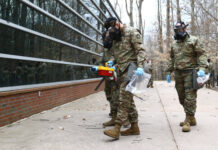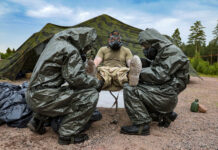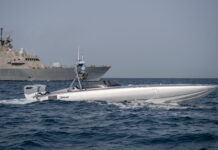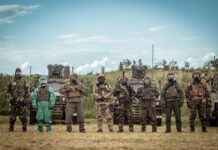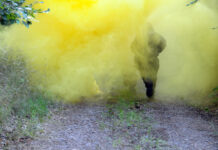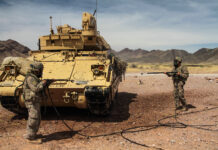The overwhelming narrative in European defence and security is the war in Ukraine. In military affairs, the best news involving CBRN is that, in fact, there has been no news in CBRN. The ongoing conflict has not seen the use of CBRN weapons or materials. The handful of reported incidents have, so far, been erroneous reporting or situations being taken out of context. Even the occupation and liberation of the contaminated area around Chernobyl seems to have been largely a non-issue.
Defending Territory
What has happened, though, as has been discussed in every outlet for serious defence journalism, has been a cosmic realignment in defence priorities and budgets in Europe. As Ukraine faces invasion, the rest of Europe has started to realise that actually fighting wars on the ground, in their own country or nearby, is still very much a thing in the modern era. Defence policy is not about vague commitments and occasionally sending a company or battalion on an EU, UN, or NATO mission somewhere else. It is, and always has been, about defending territory. Some people are just now re-learning this harsh fact. Furthermore, the potential war in front of us all is not another Afghanistan conflict, with negligible CBRN threats. Many practical CBRN deficits exist in European militaries, and years of underinvestment lead to gaps in capability or capacity.
To the veteran observer of CBRN defence and security, the logical question to ask is just how much of this epiphany results in additional expenditures on CBRN defence and security. It is too early to learn the answer to the question. But there are at least two possible ways to venture an answer. The optimistic answer is that a rising tide will raise every boat. Expansion of force structure and modernisation of land forces would necessitate additional spending on CBRN force protection, at least in theory. The pessimistic answer would be that the exigencies of the Ukraine crisis point to a wide variety of small and large deficits in defence capability and capacity. Money spent on respirators and decontamination units is money that could be spent on tanks, artillery, ammunition, and, well, everything else. Eventually, CBRN defence expenditures may lose out to other, necessary imperatives. It is too early to tell which way this will break, but we have a few hints in a new NATO document.
Collective Efforts: NATO
The conflict has had many effects on NATO, but has it affected NATO’s CBRN defence policies? It is rare that we get a quick response to a NATO-based question. The answer is yes. On 14 June 2022, NATO published a new policy document entitled “NATO’s Chemical, Biological, Radiological and Nuclear (CBRN) Defence Policy.” Replacing a document from 2009, the new policy includes some interesting material. The paragraphs on Russia cite “Novichok” agents and the Skripal and Navalny poisonings. The document shows that there is consensus among the NATO members that Russia remains a serious CBRN threat. The document is the closest thing to a formal accusation of Russian non-compliance with treaties that this correspondent has seen.
The NATO policy gives appropriate attention to threats posed by new technologies, such as nanotechnology and pharmaceutical developments, whereas older policies on CBRN often looked back in time at cold war-era threats and technologies. The new policy establishes two “core principles and commitments.” The first is “Enhanced and Integrated CBRN Military Capabilities” and the second is “Improved Resilience against CBRN Threats.” Of significant interest is that the document spends much effort talking about civilian response and population protection and not just military CBRN defence. Five or ten years ago, one might be forgiven for a bit of cynicism about such a document emerging from NATO. But the Ukraine crisis has been a moment of clarity for NATO. Things are suddenly being taken more seriously, so this policy document will have some clear traction. On a related note, Sweden and Finland joining NATO also will have some effect on the alliance, as both of these countries take CBRN defence rather seriously.
More long-standing NATO efforts have contributed to the overall CBRN operational climate in Europe in recent years. NATO’s standardisation efforts are essential to the CBRN industry. NATO fields a Combined Joint CBRN Defence Task Force consisting of a Joint CBRN Battalion and a CBRN Joint Assessment Team. NATO’s CBRN Centre and school in Vyškov (CZ) is well regarded. NATO also consistently conducts multinational CBRN exercises across the region. CBRN in a broader NATO context was discussed in issue 06-2017, but the subject is worthy of a re-visit in future issues.
EU Efforts
NATO is not the only collective body in Europe. The European Union (EU) has had a CBRN Action plan for some years now, analysed in detail in issue 08/2018 of this publication. This plan sets strategic directions, and nothing in it is out of place or incorrect. But in a more direct sense, the EU is taking action on CBRN in the context of the Ukraine war. The EU announced in June that it has used the rescEU component of its Civil Protection Mechanism to send €11.3M worth of CBRN defence kit, such as suits and decontamination supplies, to Ukraine. These were drawn from reserve stockpiles in member states, but even merely replacing this outlay would represent, by recent European standards, a medium to large CBRN procurement.
A more long-standing effort is the European Union CBRN Centres of Excellence (CBRN CoE) programme. Now into its second decade of life, the CoE have worked extensively to project EU-based expertise to other parts of the world, funding 91 projects through eight regional secretariats and 62 partner countries. The global COVID-19 pandemic saw a bit of a pivot by CBRN CoE, but arguably pandemics lie within the ‘B’ of CBRN.
The CBRN space is one that is heavily driven by science and technology. Within the European Union (and some associated countries), a major force in research and development has been European Union expenditures. The current mechanisms for such are Horizon 2020 and its successor Horizon Europe, replacing older funding programmes like FP6 and FP7. There have been many grants directly in the CBRN space for decades now. Projects like EU-RADION, TERRIFFIC,
eNOTICE, Proactive, EU Sense and many others push the frontiers of knowledge in CBRN response. Readers wanting a full accounting of EU-wide research efforts are encouraged to look up the ENCIRCLE project, which attempts a full accounting of the entire situation.
A common criticism of such EU-funded projects is that they often result in little beyond a website and reports. The European Commission acknowledges some problems historically with this and is further stressing actual impact in the real world as part of its proposal review process. However, it is too early to tell what long-term impact many of the current generation of Horizon projects will have in CBRN. In fairness, it should be noted that a number of Horizon 2020 and Horizon Europe projects not specifically naming CBRN in their titles or mission are also in adjacent spaces with possible applications in CBRN defence. Various projects in border security, aviation security, fighting crime and terrorism, and disaster resilience have had both direct and indirect applications in the CBRN space.
National Efforts
Most practical spending on training and equipment in CBRN happens at the national level. But despite all the broader developments mentioned above, actual procurement tenders and contracts in CBRN equipment and services remains only moderate. Perhaps some of the biggest activity recently has been by Avon Protection, the UK-based respirator and protective clothing manufacturer. Avon is the manufacturer of the FM50 mask, adopted in the USA as the M50 Joint Service General Purpose Protective Mask. This adoption by the USA has been leveraged into significant uptake elsewhere. Avon has recently reached a figure of 100,000 FM50 masks sold to NATO members through NATO’s Support and Procurement Agency. Furthermore, Latvia and Netherlands have made the decision to adopt this mask.
Looking through current procurement and tenders, the range of opportunities at the time of writing (July 2022) remains modest. Luxembourg appears to be procuring CBRN detection equipment and decontamination equipment, according to various sources. CBRN laboratory equipment appears to be sought by Hungary and CBRN training services are being sought by Romania. This correspondent has also heard talk of German procurement of CBRN equipment for civil defence in Germany. The aggregate value of all of these appears modest, and one awaits broader developments from the overall rise in in defence spending.
EU CBRN Industrial Base
As various articles in this publication have been keen to note for a number of years, much of the world’s industrial base and technical expertise in CBRN is based in Europe. The output, both economically and intellectually, of this CBRN industrial and technical base, has traditionally exceeded domestic European demand and competes well in the export market. For detailed analysis of the major sectors of the CBRN industry, this correspondent has done a number of sector-specific articles over the past five years, but it is worth a quick tour of the space as there are clearly Europe-based industry leaders.
Decontamination systems and solutions is a segment with three global leaders from Europe. Kärcher (DE), OWR (DE), and Cristanini (IT) are decontamination manufacturers with global uptake and firmly established European clients. Any uplift in CBRN spending will almost certainly increase business for all three. The detection instrument market also has European leaders. Military chemical warfare detection has consistently been a rivalry between Smiths Detection (UK) and Brüker (DE), with Environics (FI) and Proengin (FR) somewhat behind them in size of market share. All of them produce chemical warfare agent detectors of hand-held size, as well as a variety of other detector systems. In terms of total units in service, Smiths by far is the chemical detection market leader with its LCD series of detectors.
Respiratory protection and CBRN protective clothing are a significant percentage of CBRN defence spending, both in Europe and in the broader export market. Avon Protection (UK), mentioned above, is one of the global leaders in this space. At Eurosatory this year, Avon also unveiled their “Exoskin” line of CBRN boots and gloves. Nonwovenn (UK) and OPEC-CBRNe (UK) are very active in the CBRN protective clothing arena. Blücher (GE) and Paul Boyé (FR) are very active in the suit manufacturing space. Dräger (DE) provides a wide range of gear in both civil and military market spaces.
Several larger defence conglomerates have branches or divisions that do some CBRN work, particularly Rheinmetall (DE) and Saab (SE). But there are a wide range of smaller firms in various segments of the European CBRN industrial space. Kromek (UK) and Serstech (SE) are merely two up and coming players in the detection segment. Various Czech firms leverage long-existing expertise left over from the Cold War. Some European firms have become world leaders in their specific CBRN niches. Bruhn Newtech (DK) is one of the finest vendor-neutral integrator of other manufacturers’ CBRN detection systems. Hotzone Solutions (NL) is a world-class training provider, with access to live agent facilities in Czechia.
Conclusion
Roughly half of the world’s CBRN budget and activity is in the North America market, but perhaps 25 per cent is in the broader European space, if history is our guide. The general consensus within the CBRN industry is that the conflict in Ukraine will result in somewhat increased CBRN industrial activity directly, but that there will likely be large opportunities in the following years as force modernisation and force expansion across Europe start to take hold. The only serious arguments and speculation will about what percentage of the general uplift will be devoted to CBRN.


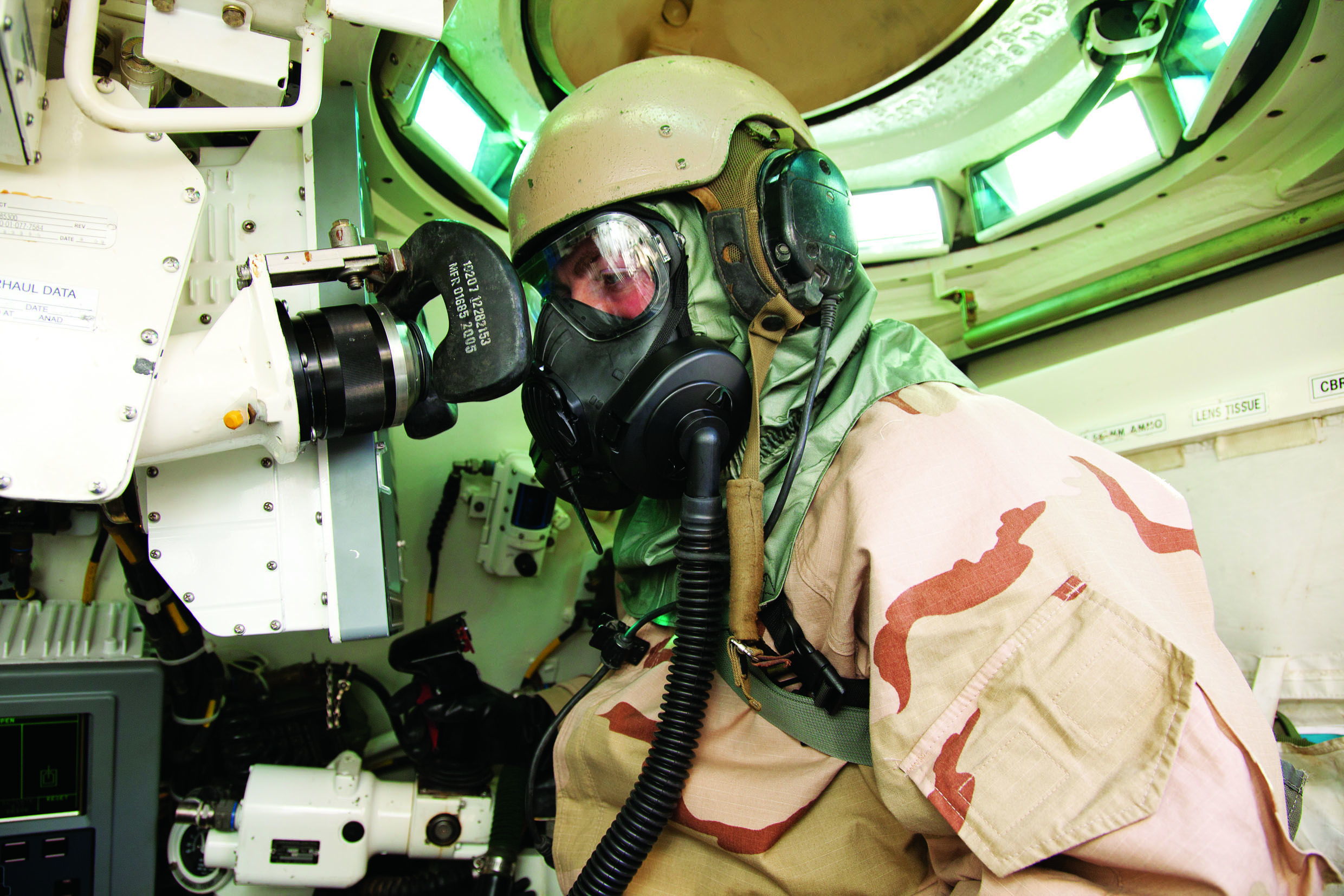



![Danish acquisition programmes Danish soldiers training in Kangerlussuaq, Greenland, during June 2025. [Forsvaret/Rebekka Gimm]](https://euro-sd.com/wp-content/uploads/2025/07/Danish-Soldiers-in-Greenland-Kopie-218x150.jpg)
